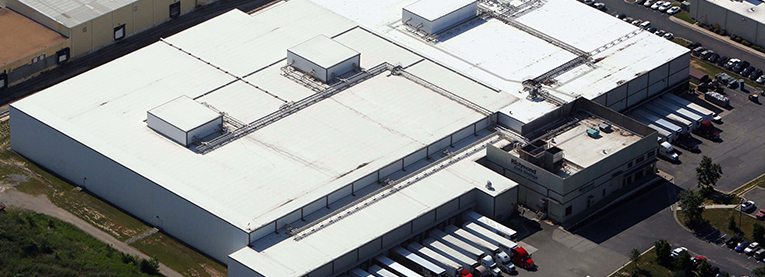
You know the feeling of walking barefoot on a hot summer’s day. The dark asphalt street was unbearably hot while the light colored sidewalk offered welcome relief for your tender feet. The same effect holds true for roofs. Cool roofing reflects harsh sun rays so the roof’s surface (and interior space underneath it) doesn’t get scorching hot. The technology offers wonderful benefits for facilities and commercial buildings in states like Florida, Texas, Arizona and other sunny climates.
Reduce Operating & Utility Costs with Energy Savings from Cool Roofs
On a sunny afternoon, a traditional dark roof can reach 150°F or more, while a cool roof nearby might not even reach 100°F. When roof surface temperatures soar, air-conditioning costs follow, often making it cost-prohibitive to maintain desirable interior temperatures. Cool roof technology reduces HVAC operating costs as much as 15% or more, and can extend the life of the HVAC system.
Environmental Benefits of Cool Roofs
Cool roof benefits aren’t limited to reducing facility operating costs. With high reflectivity and emissivity, cool roofs improve air quality by reducing local outside air temperatures, which in turn decrease urban heat island effect and ease the risk of global warming.
The Solar Reflectance Index
The Solar Reflectance Index (SRI) is a scale for calculating a roof’s “coolness” factor. The SRI measures the roof’s ability to reflect sunrays and to emit thermal radiation. The better the roof resists heat from direct sunrays, the higher its SRI number will be. To meet the US Green Building Council’s (USGBC) Leadership in Energy and Energy and Environmental Design (LEED) standards, a low-slope facility roof should have a minimum SRI value of 78. Many cool roofs score an SRI index or 100 or higher.
Cool Roof Options
There’s more than one way to improve your roof’s SRI value and North American Roofing can help determine which type is right for your facility.
- TPO: Single-ply thermoplastic polyolefin (TPO) roofing, manufactured from synthetic rubber, offers high solar reflectivity, making it a top choice for air-conditioned buildings and cold storage facilities. TPO qualifies for LEED credits and is suitable for new roof and re-roofing installations.
- PVC: Single-ply thermoplastic polyvinyl chloride (PVC) is another worthwhile option for obtaining cool roof benefits. Like TPO, PVC roofing qualifies for LEED credits and offers long-term durability at a competitive cost. Single-ply PVC resists grease, oil and chemical damage and is suitable for many climate types. PVC is puncture-resistant, affordable and simple to maintain and repair.
Is A Cool Roof Right for Your Facility?
While cool roofs are encouraged in some regions, and required in others, they’re not suitable for all climates. At North American Roofing, our highly trained specialists work closely with your local building authority to make sure your roof complies with all regulations. We use a lifecycle evaluation approach that factors in geographical weather demographics, upfront installation costs and ongoing roof expenses to determine your potential benefits and savings.
If you’ve been wondering about the paybacks of cool roof technology, there’s no better time than right now to find out.
